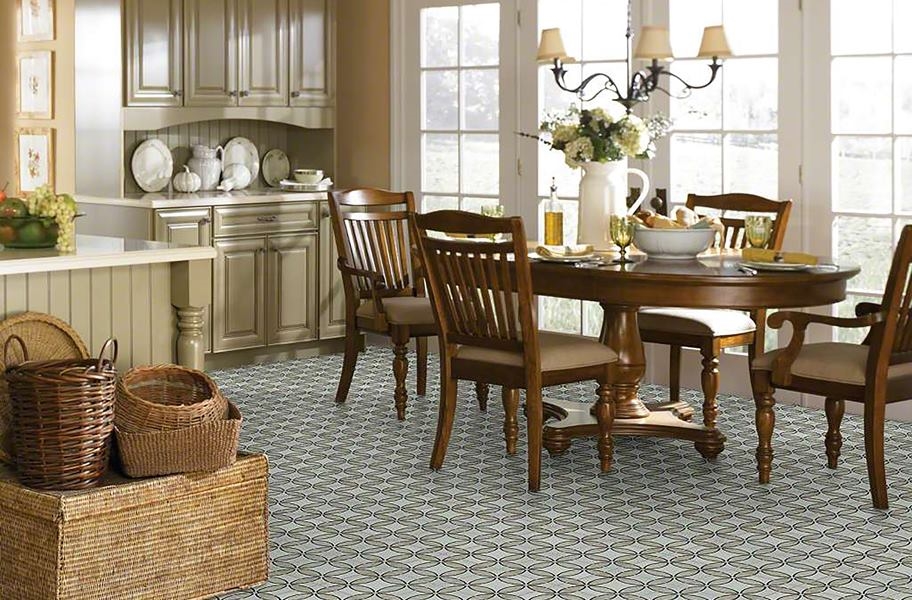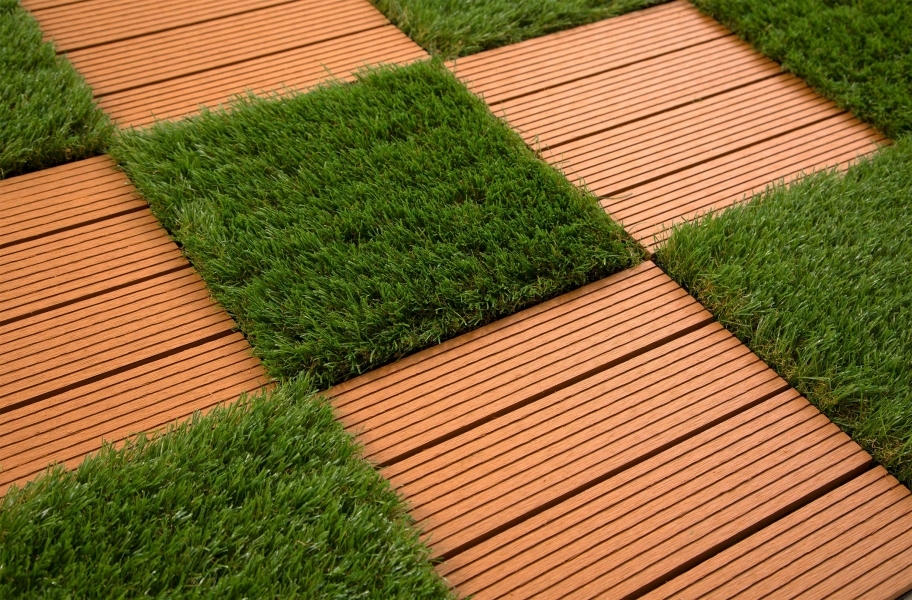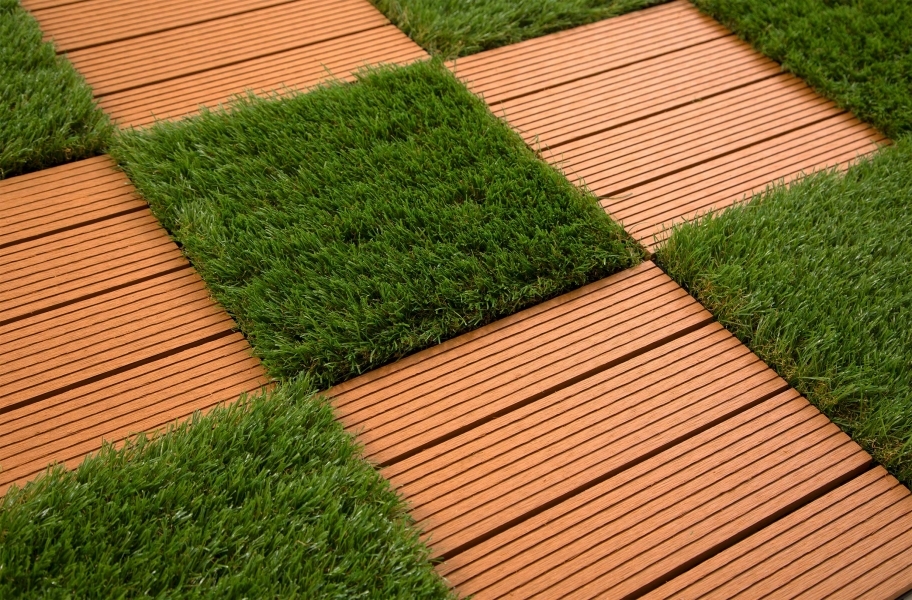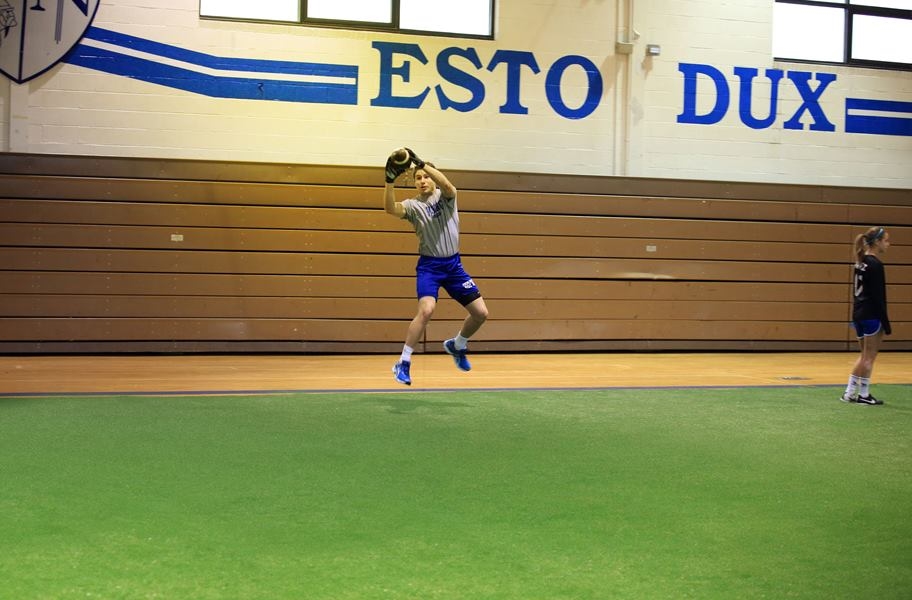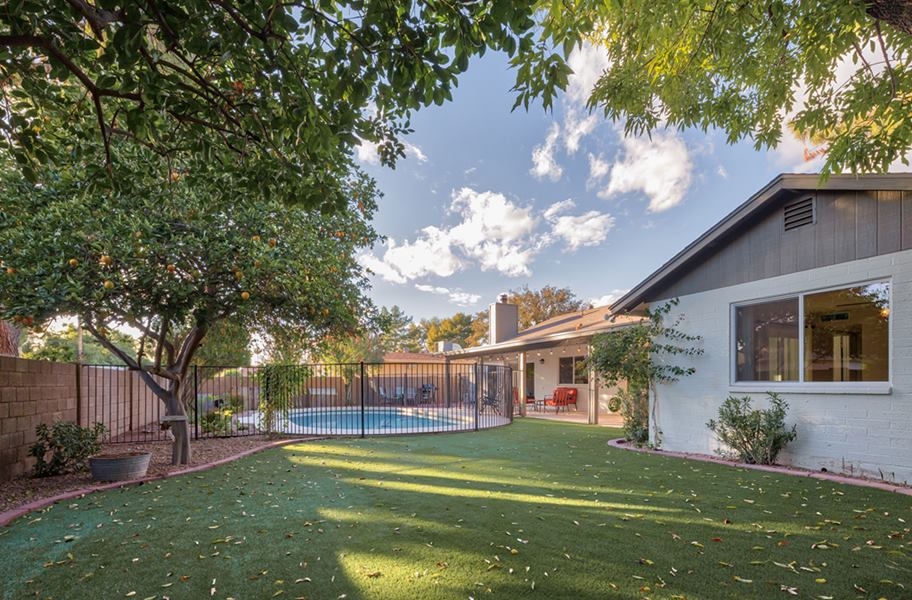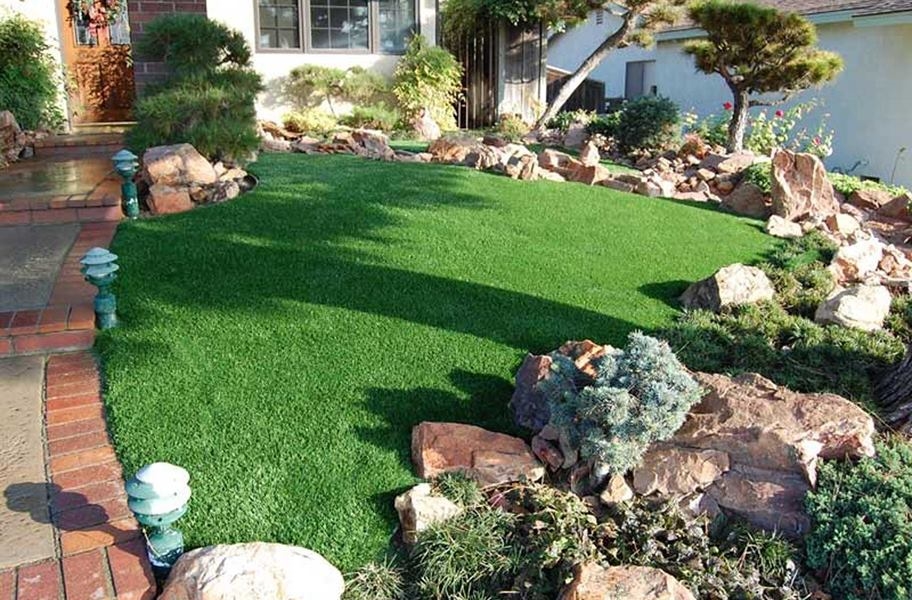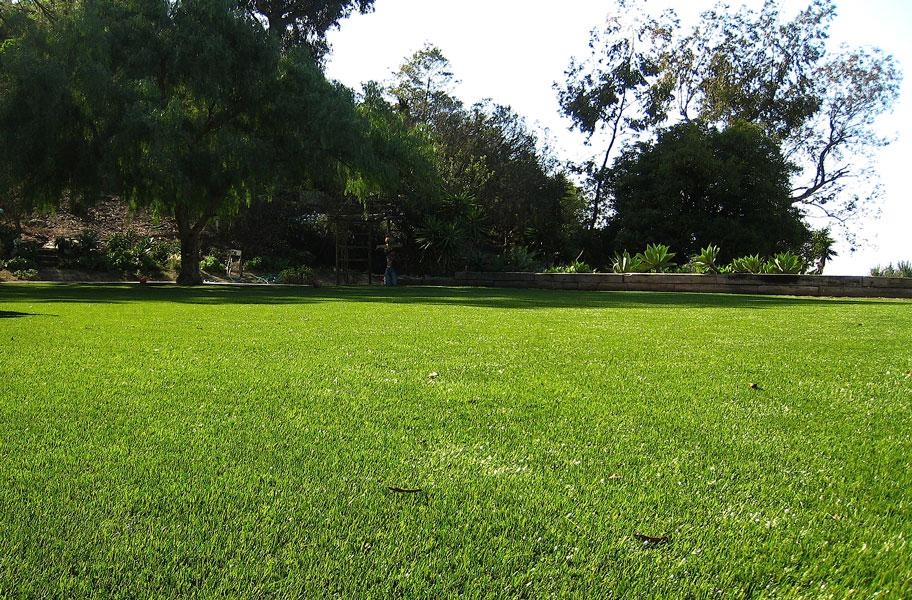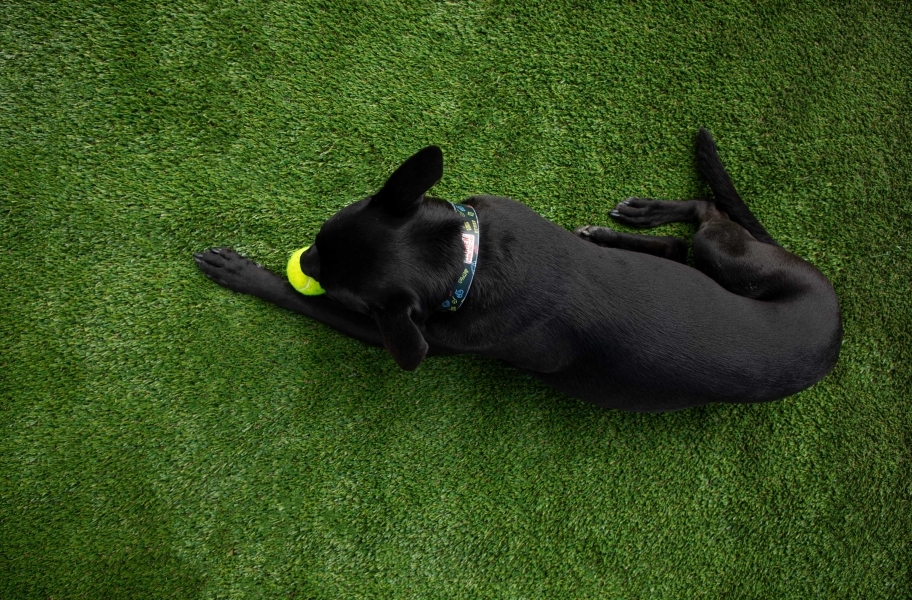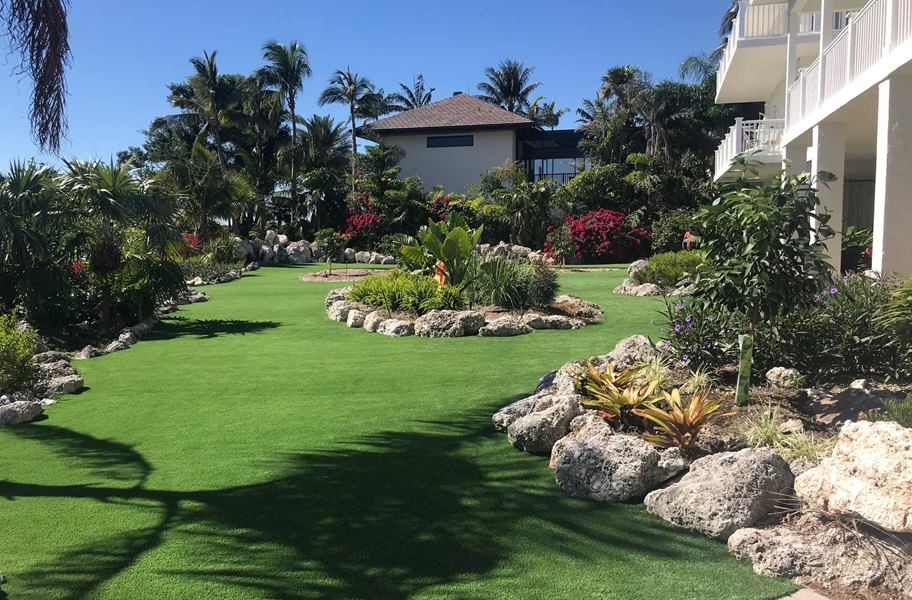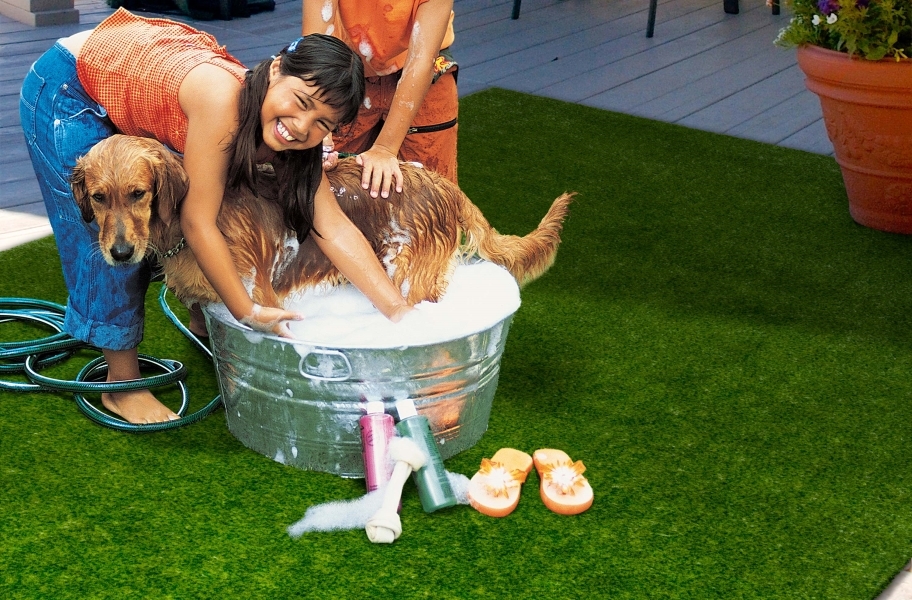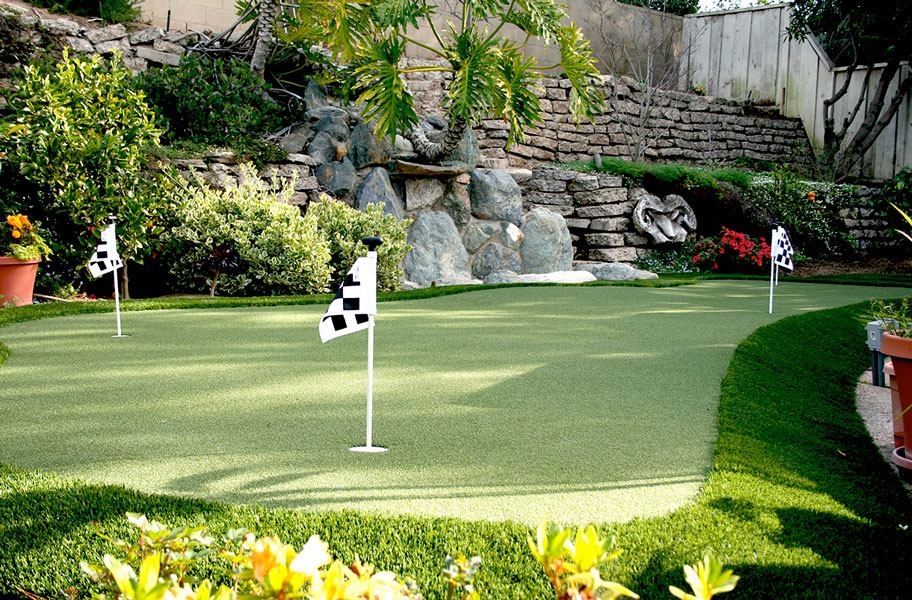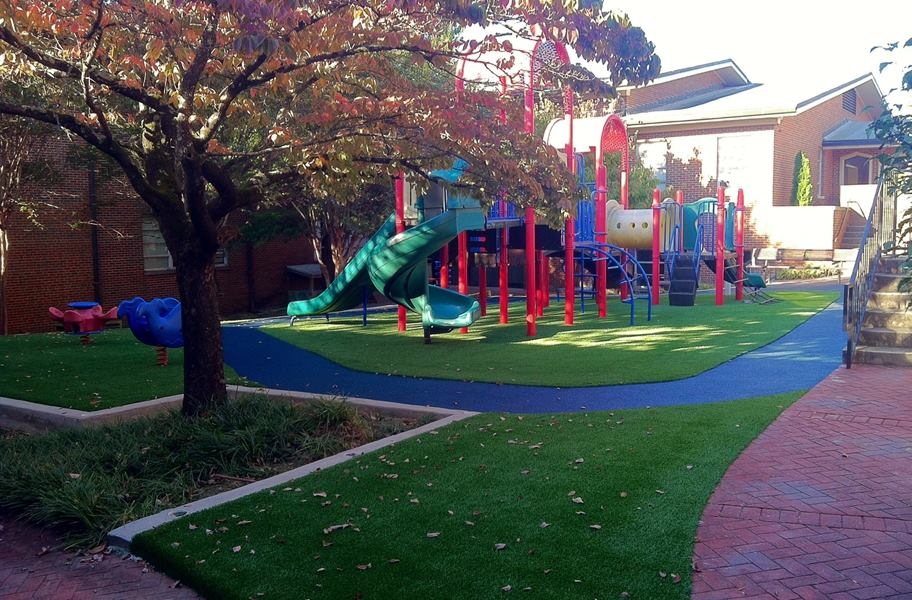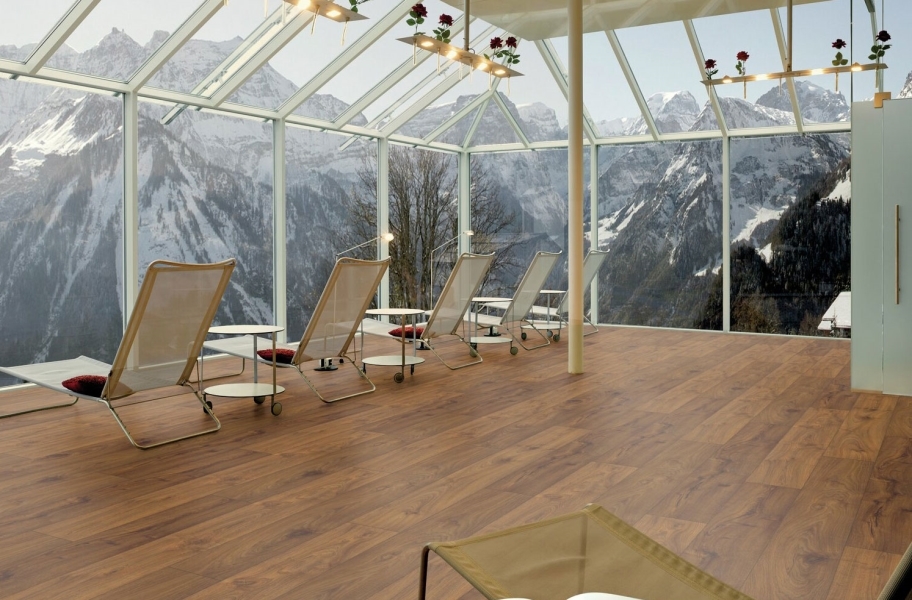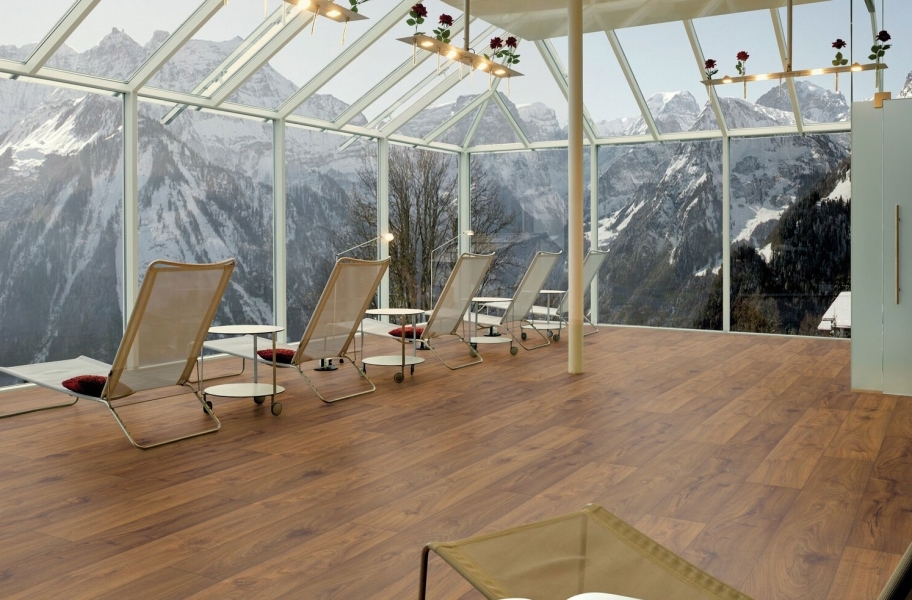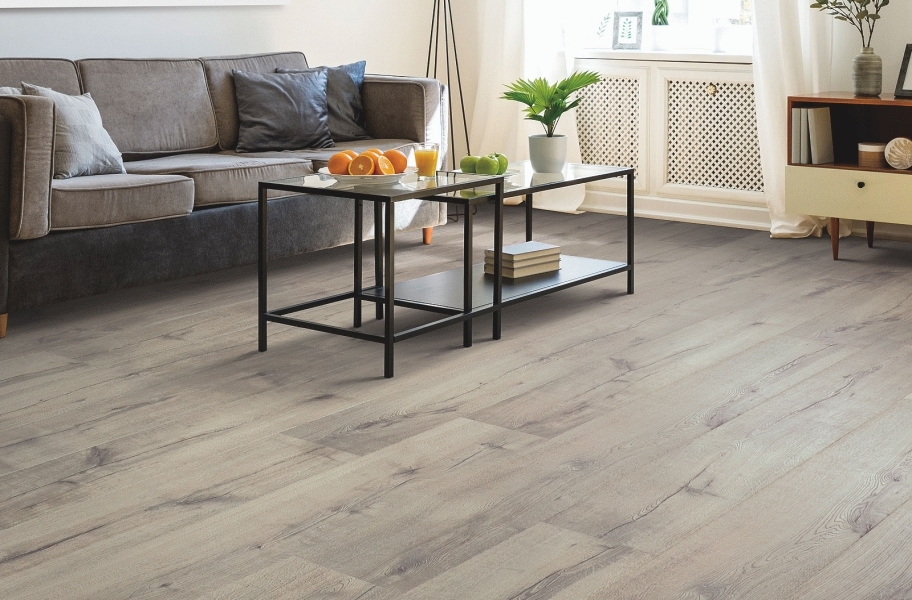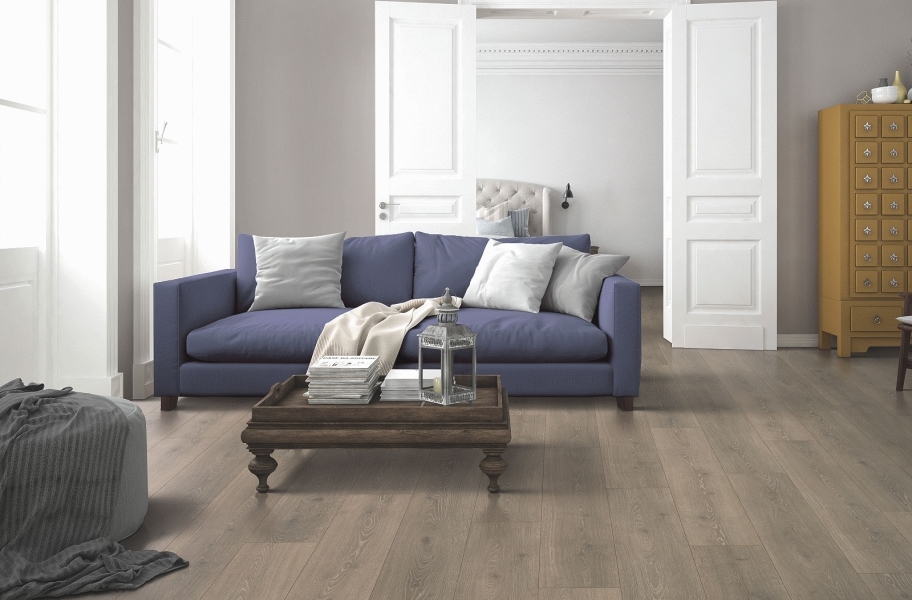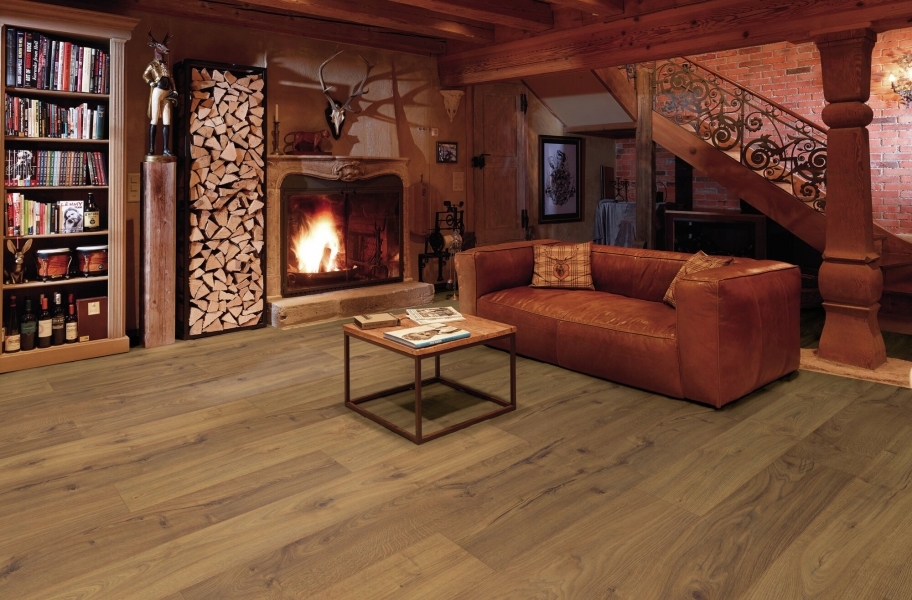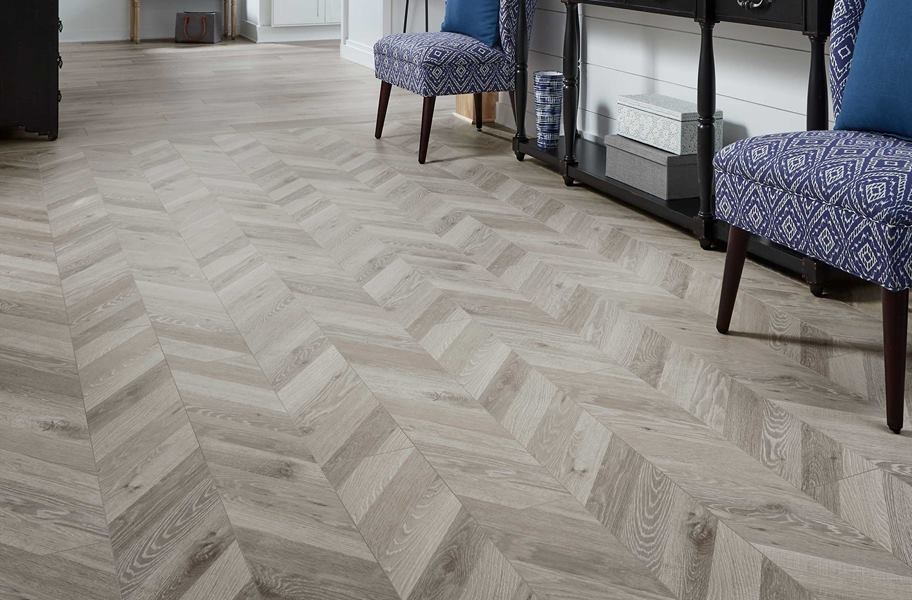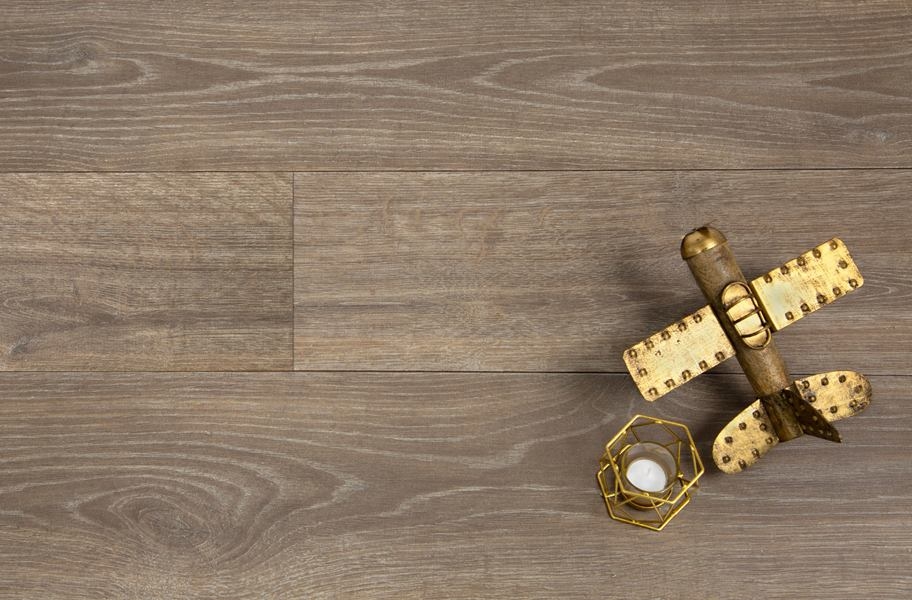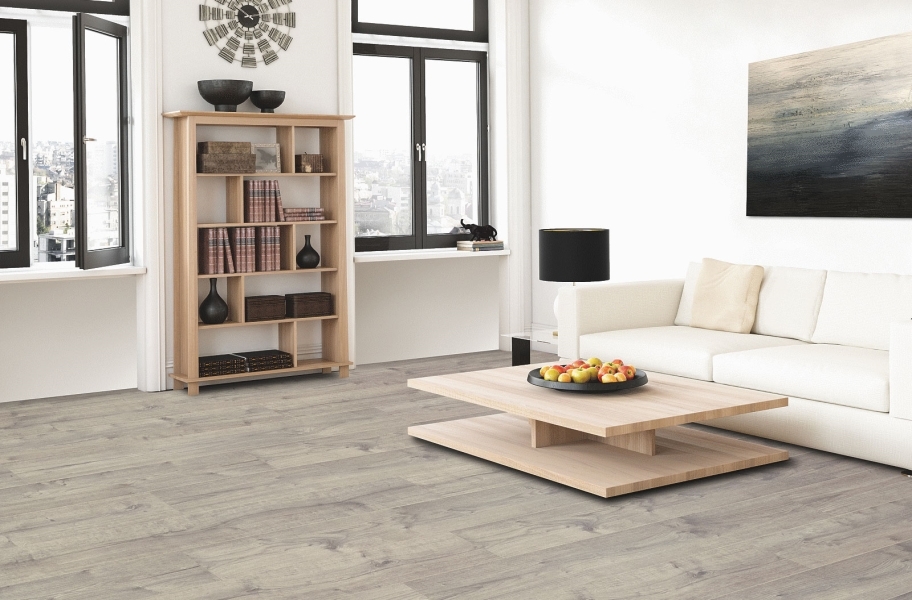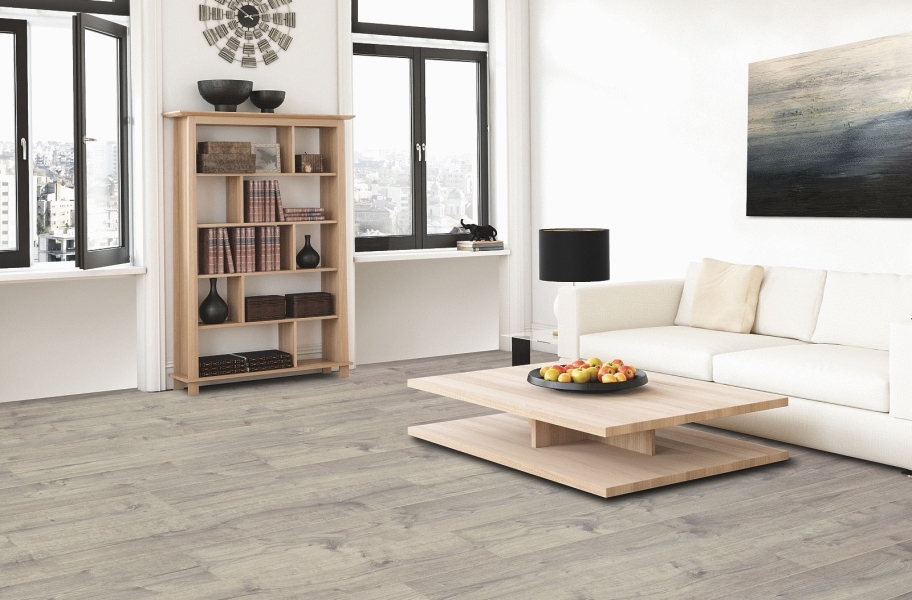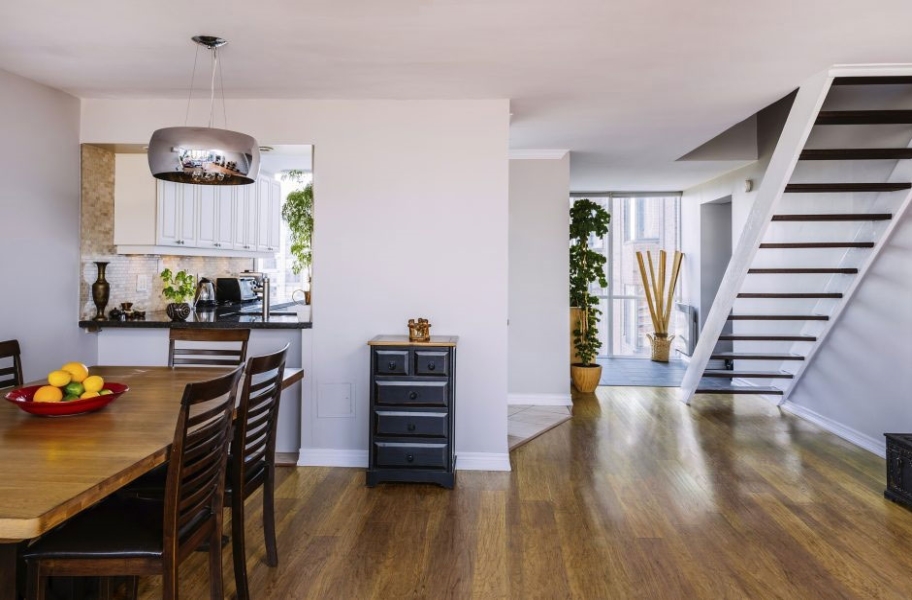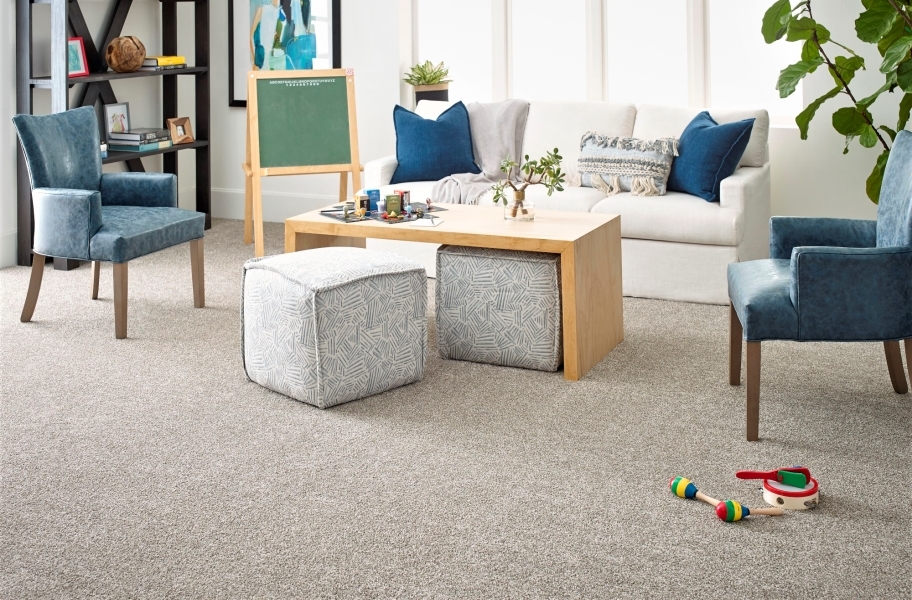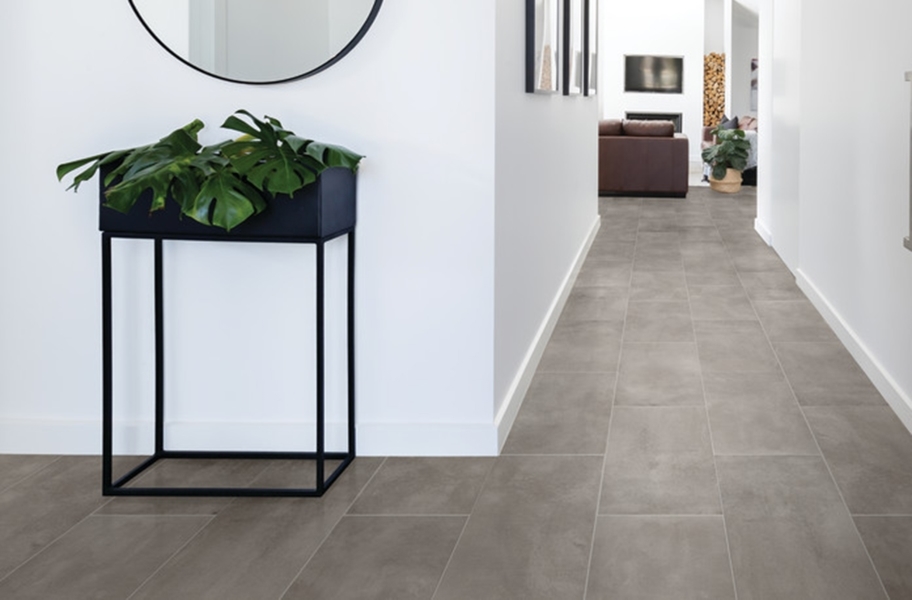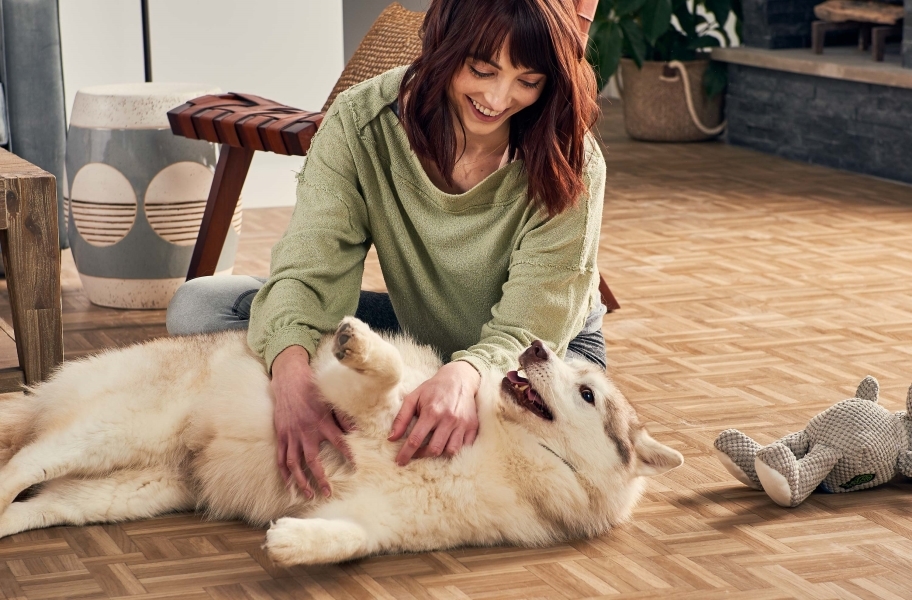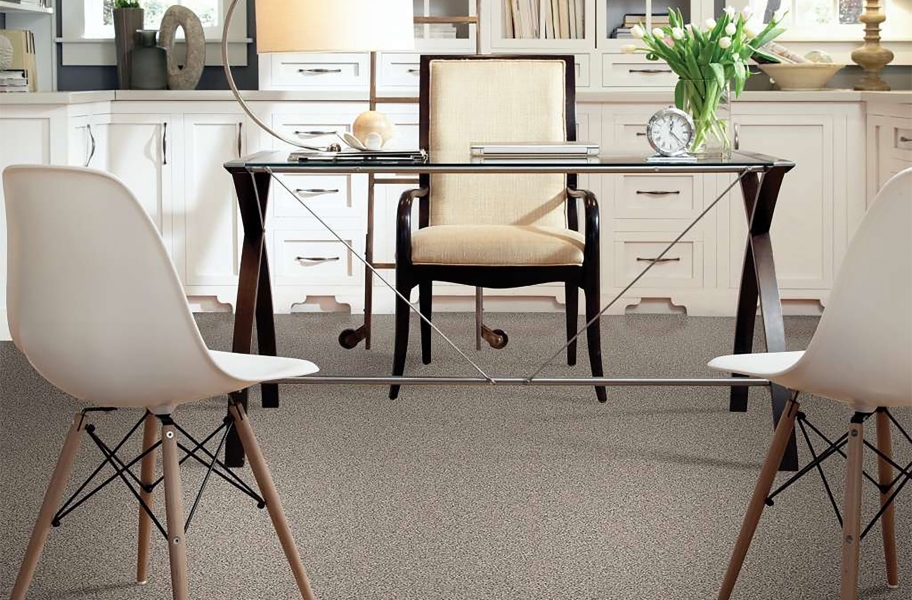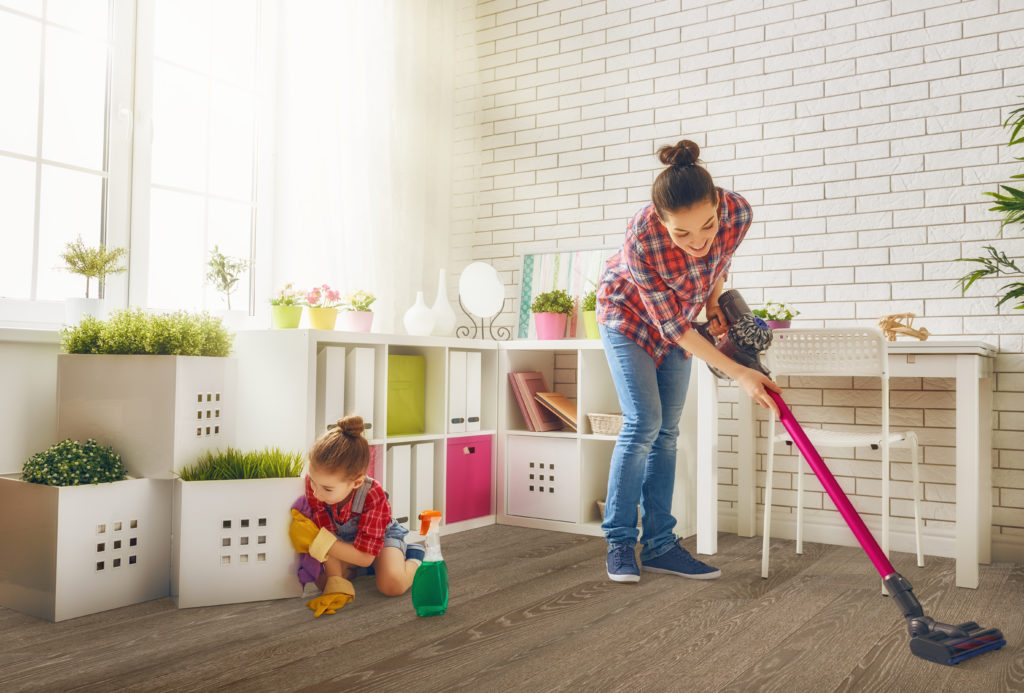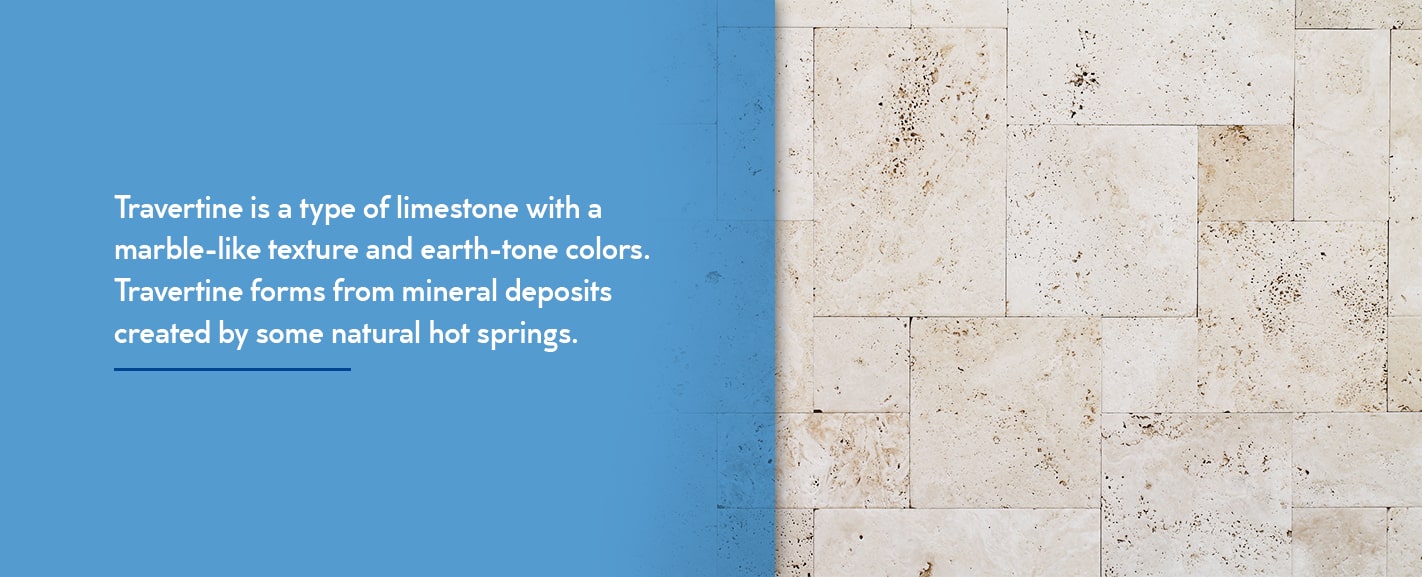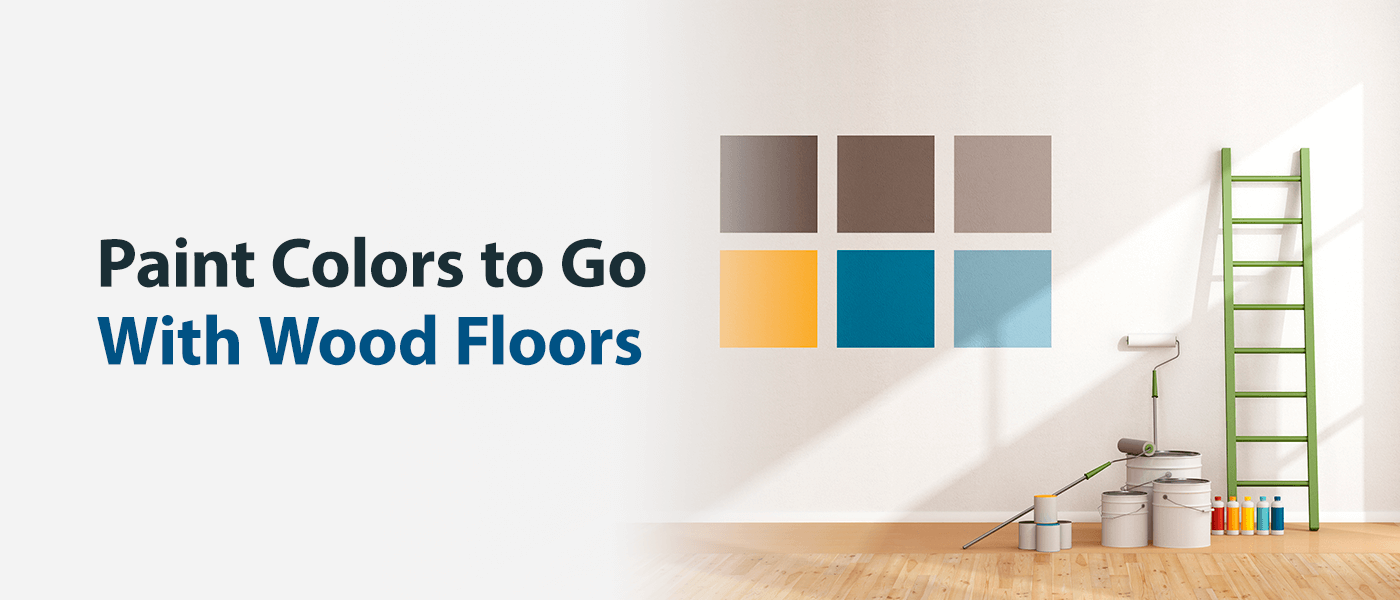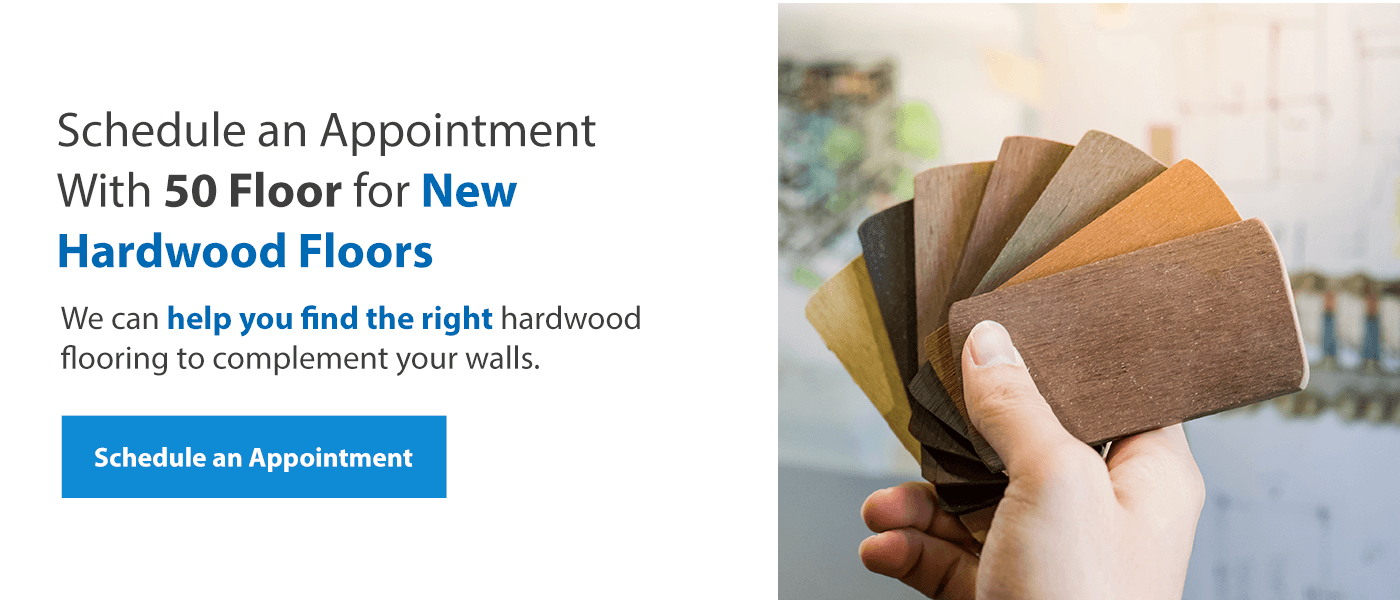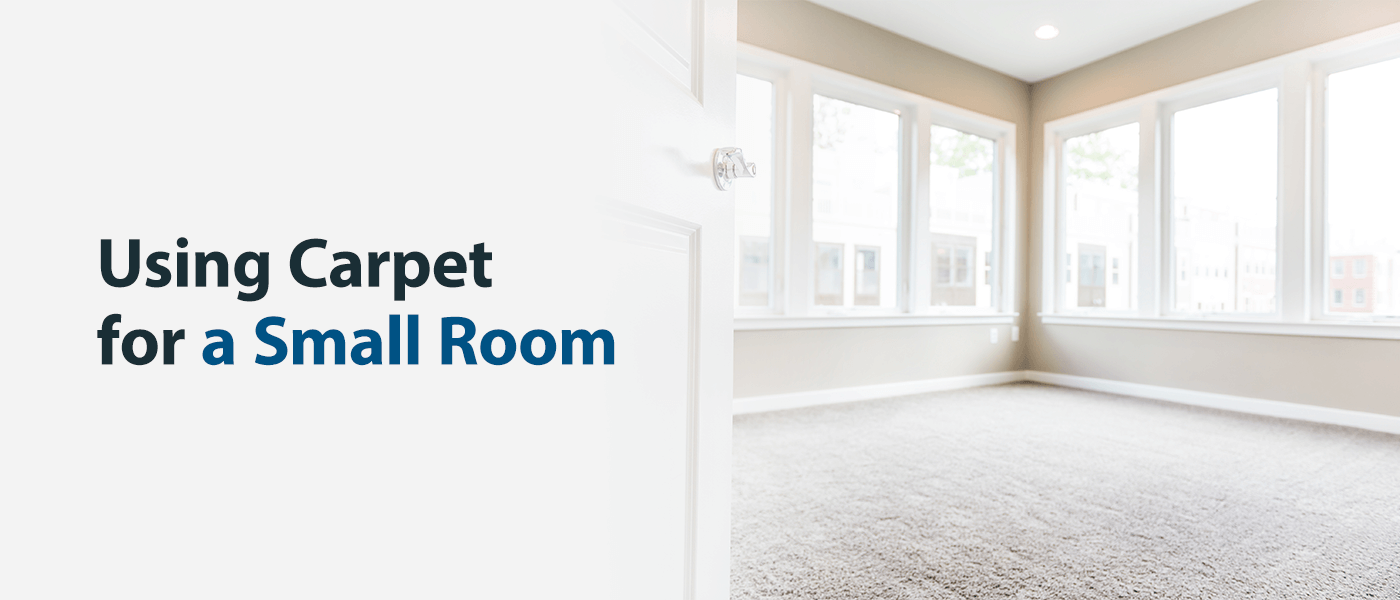Retro design is a popular style trend that resurrects every few years to transport us to a different time. But what makes something retro? Better yet, how can you incorporate retro style in your home? To accomplish this ever-changing style in your home, you’ll need retro flooring ideas, decor, and inspiration.
Check out these retro and vintage-inspired flooring options to help you achieve your vintage dreams.
Related Content > All Flooring Trends
What is Retro Style?
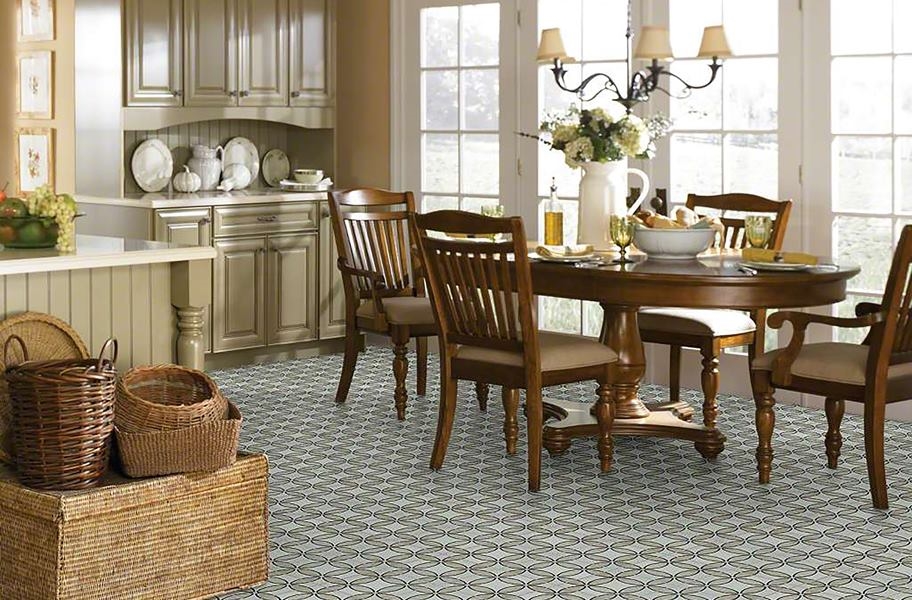
When you walk into a retro home, you’ll find furniture, flooring, and decor inspired by a specific historical era. That’s what makes retro so unique, it’s not one specific style, because it depends on the designer and their favorite era.
Most commonly, you’ll see retro splashes throughout a house. Retro design features pops of color and relies heavily on decor and furniture to transport you to the decade of your choosing. Oftentimes, retro style closely mimics mid-century modern with exposed furniture legs, pops of color. It’s abstract, unique, and incorporates bold patterns, colors, and textures.
What’s the Difference Between Vintage and Retro Style?
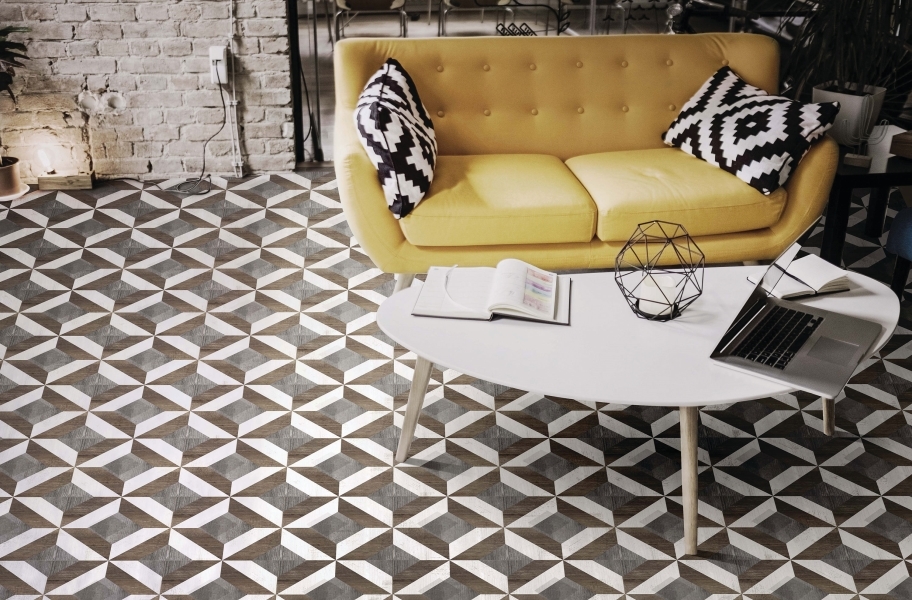
There’s a fine line between vintage and retro, and that line is authenticity. While both styles reference the past, be it fashion, design, or otherwise, a vintage item is an original from the time period, while retro style imitates the past. Essentially, a vintage item is an antique that lasted for years. Retro is more of an homage or throwback to a specific area in time (source
But if we’re talking about flooring, how can it be vintage? To make it simple, unless the floors are the original hardwood floors, it’s not vintage. However, many floors are designed specifically to reference a different time – that’s retro flooring. If you want a vintage style home, your floor should either be antique or imitate a specific style from the time of your choosing. That’s where retro flooring comes in to help.
Now that you know what you’re looking for, allow us to walk you through some retro-style flooring to make your design dreams a reality.
Related Content > Best Art Deco Flooring Options to Match Your Style
Retro Carpet Flooring
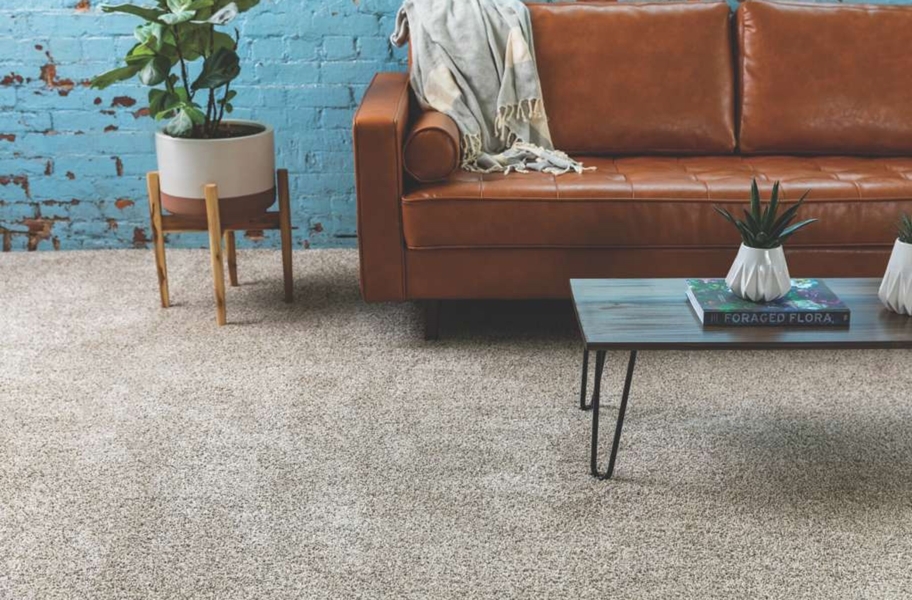
Nothing says retro quite like carpet flooring. For years, hardwood and carpet were the most common flooring in homes. But we’re not talking about the drab-looking carpet. Retro carpet is anything but drab.
The type of carpet to use for a retro-style room depends on the vibe you want for the room. From shag textures to bold carpet colors, there are a lot of options to choose from.
Bright Colored Carpet
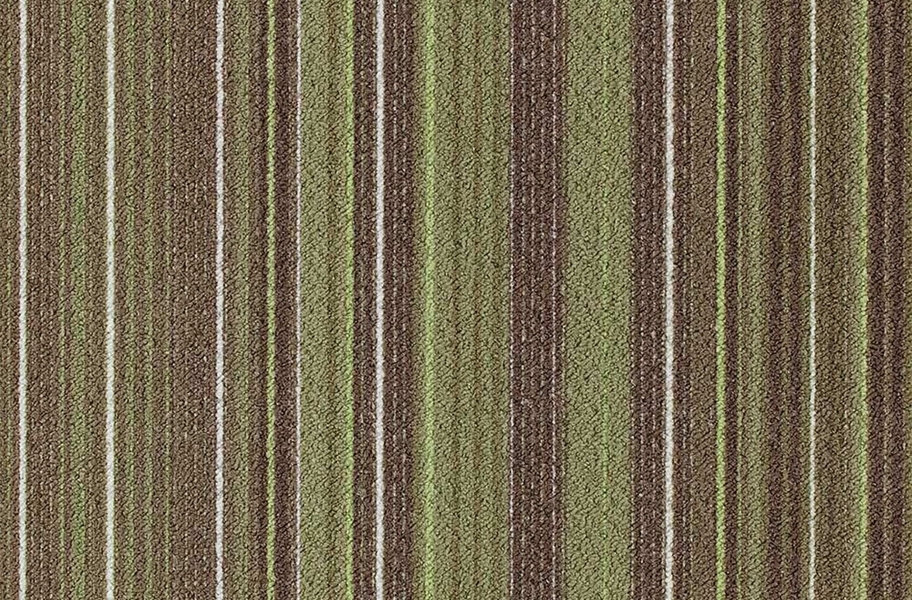
Retro design style is not afraid of color. You can embrace colors that go together creating a cohesive and bold color scheme. From deep moody purple to pale green, there are so many color options to find in a retro-style home.
“Avocado green is by far the most popular retro color choice, followed closely by mustard yellow and combinations of brown, black, white, and red. In addition, purple and hot pink both make a great addition to your retro decor. Don’t be surprised to find items that have a little of everything, with mixes of bright orange, green, indigo blue, and yellow on one single piece.” – Coral Nafie, The Spruce
Neutral Colored Carpet
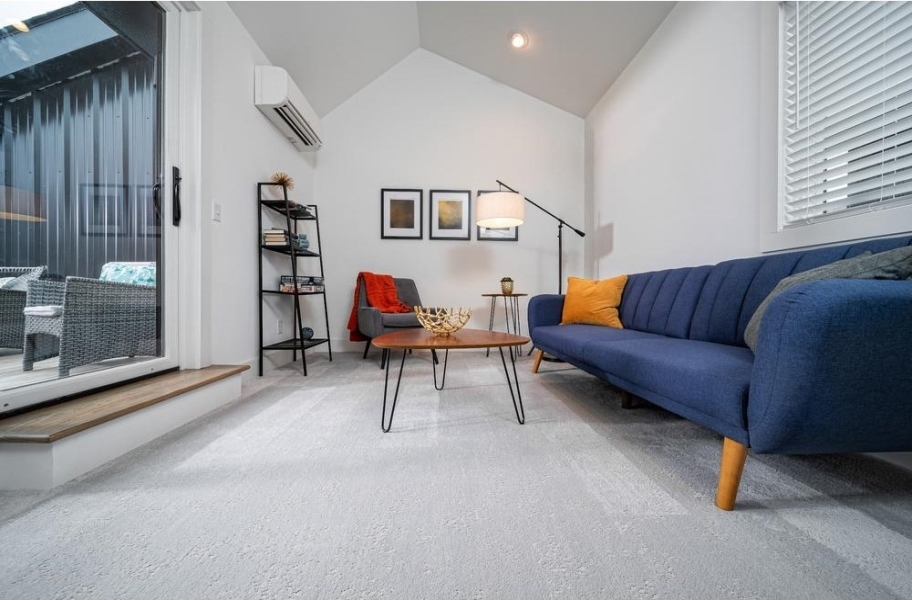
If you’re looking for less funk, and more vintage-styled flooring, a neutral carpet color like a nice beige, white, gray, or black is an excellent choice. A more subdued color scheme can offset the more bold, abstract looks in the rest of the room.
Retro Inspired Carpet Tiles
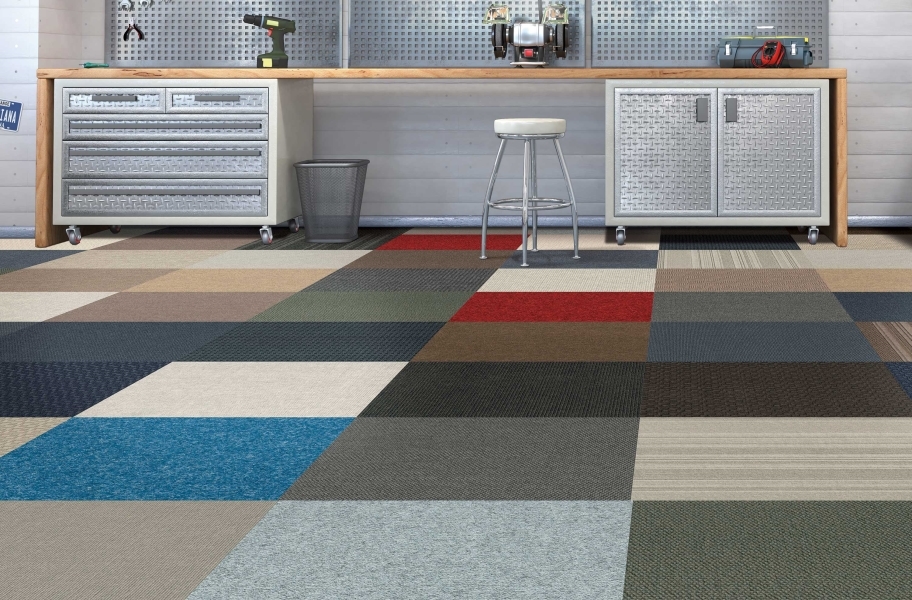
Carpet tiles are great for creating a pattern with your floor. Be it checkered or randomized, carpet tiles add a little modern twist to your retro or vintage style space. You can keep your floor all one color or go wild with a variety of colored carpet tiles to create an eclectic, bold floor, then add decor and furniture that coordinates.
Shag Textured Carpets
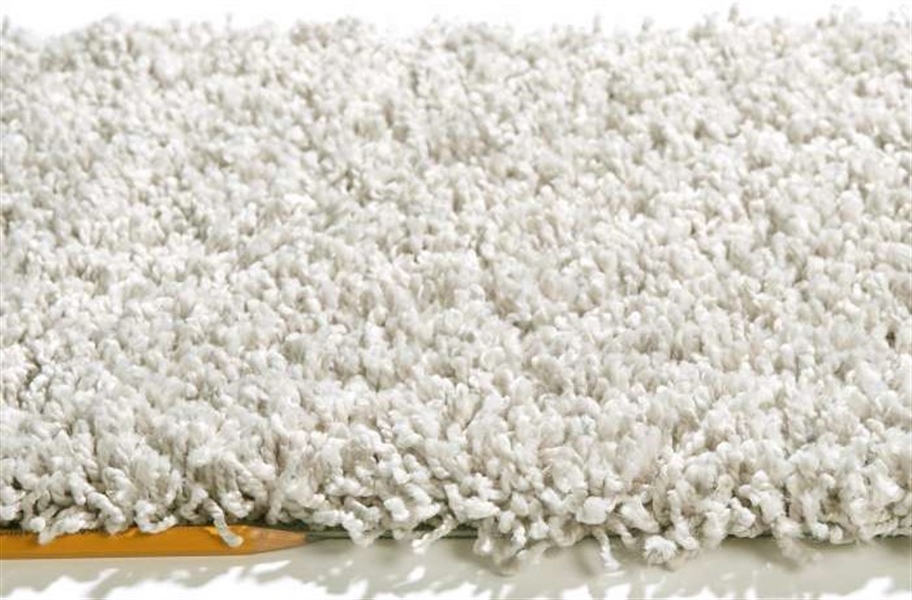
One of the most popular textures you’ll find in a retro setting is velvet or plush textures. Shag carpets are the perfect addition of texture in a vintage-style home.
Twist carpet fibers are a throwback to many decades and with the right decor, it provides an excellent starting point for the rest of your room.
Unique Area Rugs
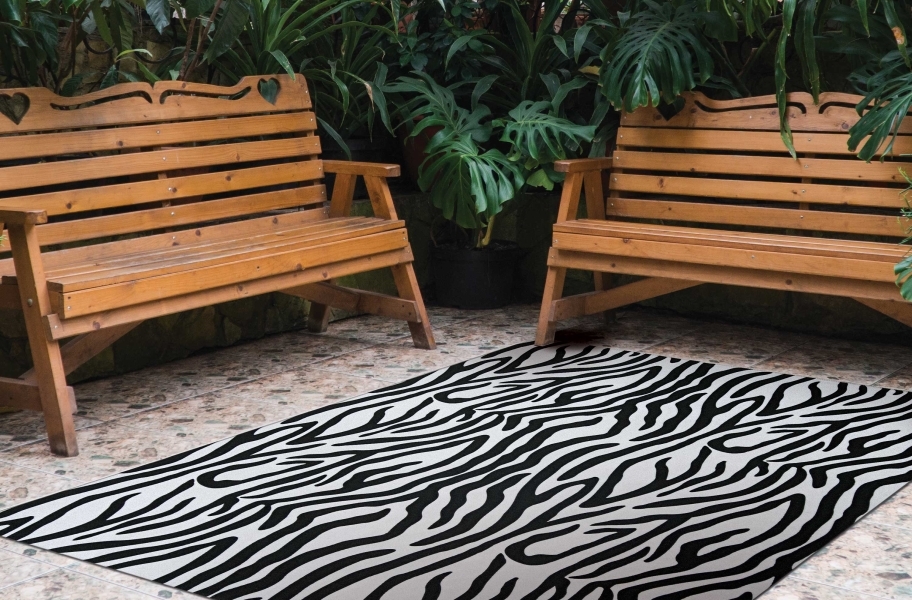
Using an area rug is an easy way to add fun textures to your vintage-style home. They can both complement your floors and add an eye-catching element to any space.
Uniquely shaped rugs, throw rugs with ornate designs and patterns, or even fluffy rugs are perfect for a retro style home. Choosing the right style of rug depends on the floor underneath.
For instance, if you already have a boldly patterned tile or carpet floor, a solid color fluffy area rug would easily add to the retro design of the room whereas another bold pattern might overwhelm the area.
Related Content > Carpet Trends: 25 Eye-Catching Carpet Ideas
Retro Tile Floors
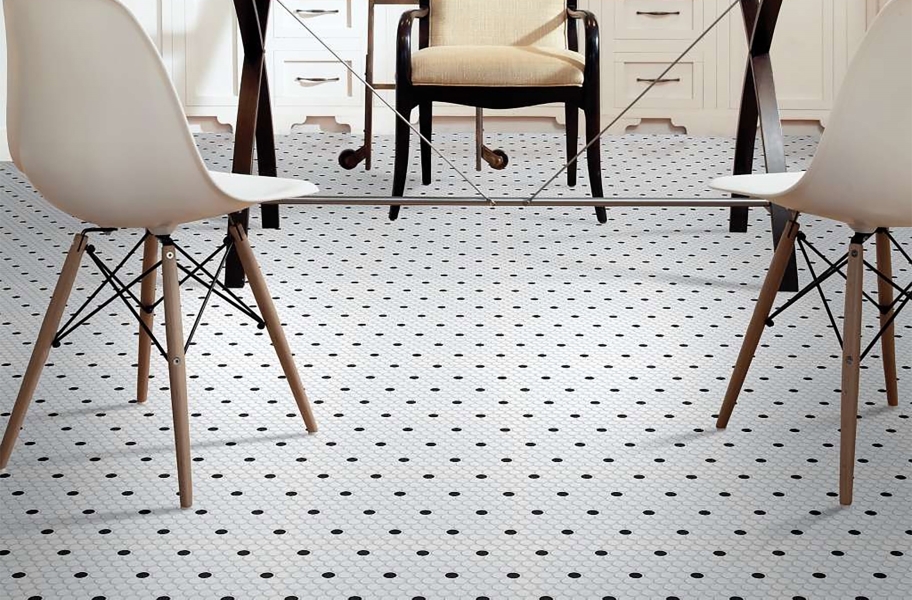
Primarily found in kitchens, entryways, and bathrooms, tile floors are a staple in retro design. The unique patterns and trending colors add an element of style to every setting.
Checkered Patterned Tile Floors
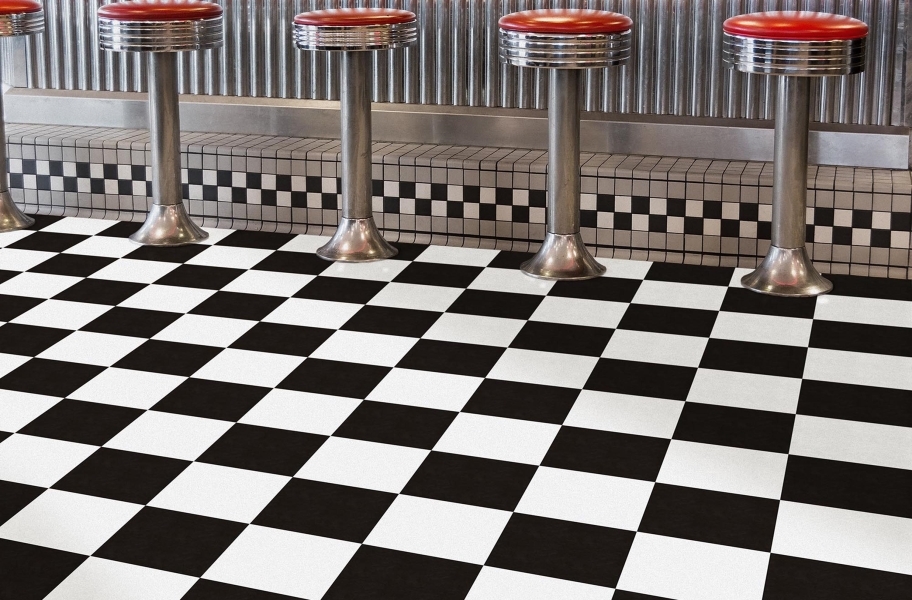
You know the trend – black and white checkered floors in a vintage kitchen. This style is one of the most popular looks for retro flooring, especially in kitchens and bathrooms. But it doesn’t have to be black and white. It can be any two colors you like. To get the classic vintage look in your home, it’s best to complement one color with white.
Warm Colored Tile Flooring
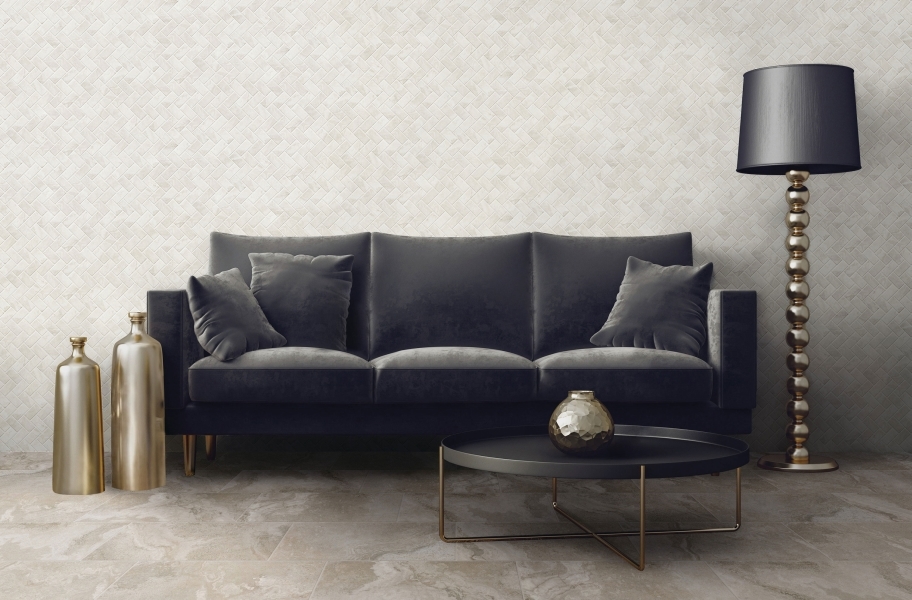
Just like carpet, tile flooring can come in unique colors to add that retro feel. With warm colors like burnt orange, brown, beige, or even olive green, your tile floors will transport you to the past while keeping style in your home.
Related Content > Tile Flooring Trends: 25+ Contemporary Tile Ideas
Mosaic Tile Shapes
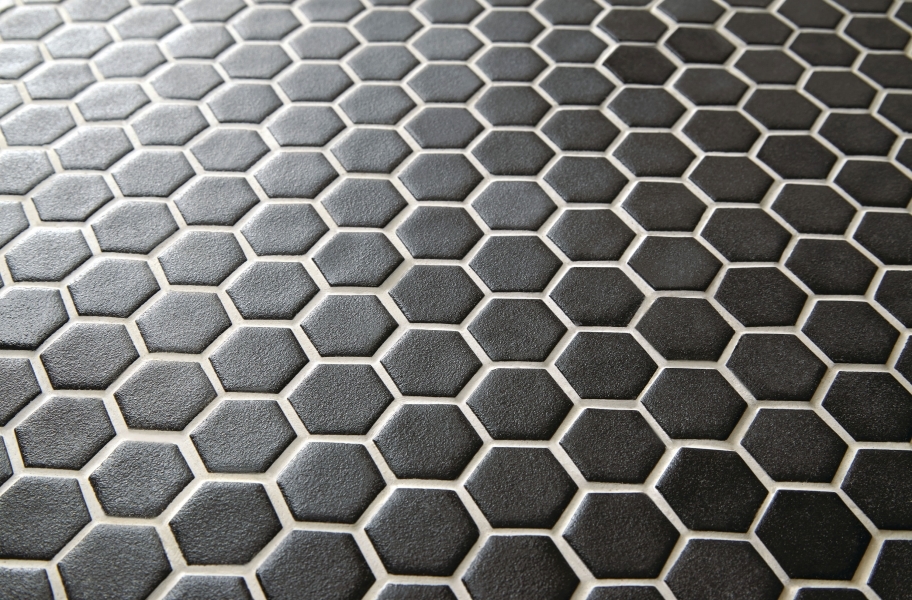
You know those detailed bathroom floors with the tiny hexagonal tiles you see from time to time? That’s the kind of vintage style you can create with mosaic tiles. With shapes like penny tiles, hexagons, octagons, or classic squares, your floor will look as though it fell right out of 1970.
Vintage Style Vinyl Flooring
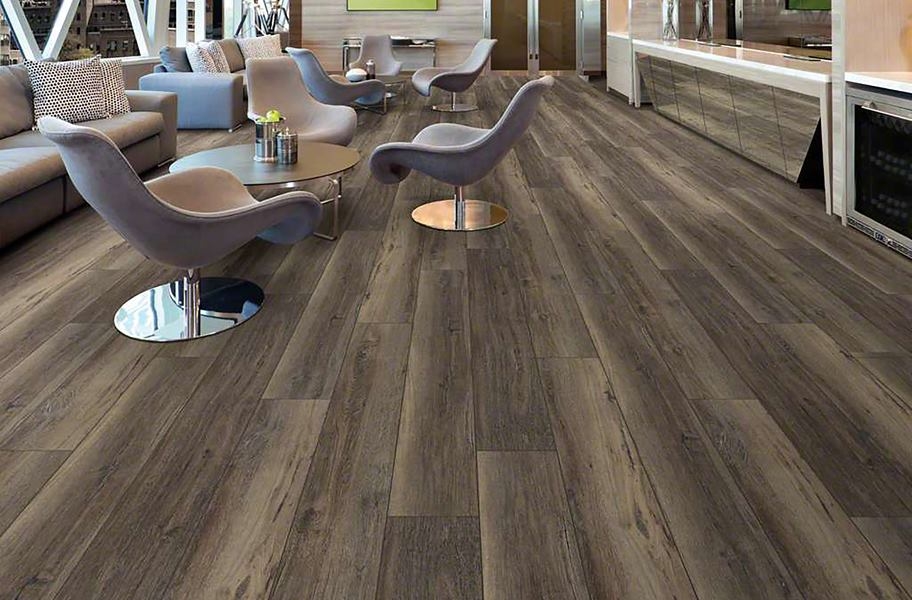
Vinyl comes in many different forms, making it the perfect retro flooring for every room in your home. From wood looks to unique decorative vinyl sheets, you’ll have no problem achieving the perfect vintage-style floor.
Retro Vinyl Sheet Flooring
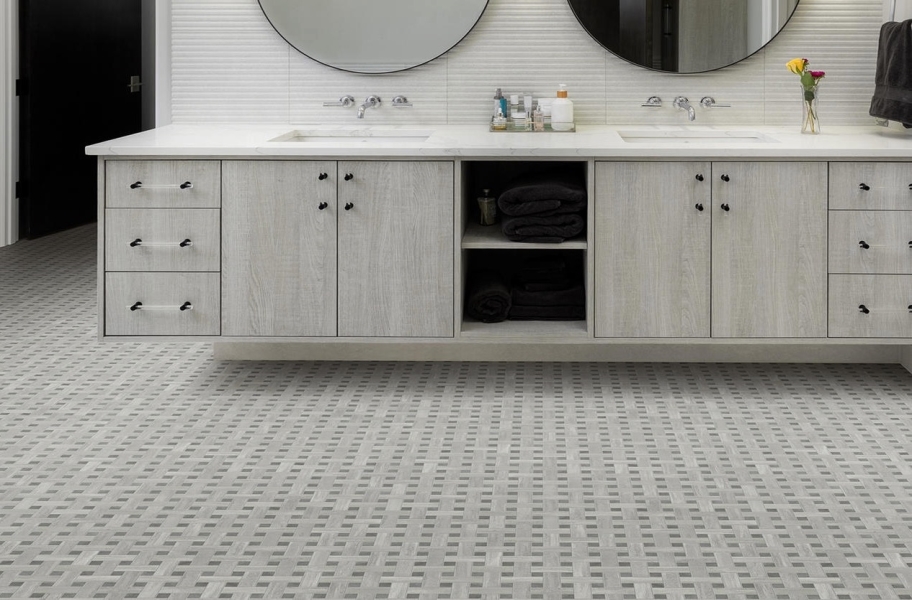
From modern to mid-century, industrial to vintage, there’s a vinyl roll ready to add style to your home. For retro flooring, it’s common to see checkered pattern vinyl sheets, hexagon patterned sheets, and intricate, almost victorian patterns. It’s easy to add a striking statement to your space.
Vintage Inspired Vinyl Tiles and Planks
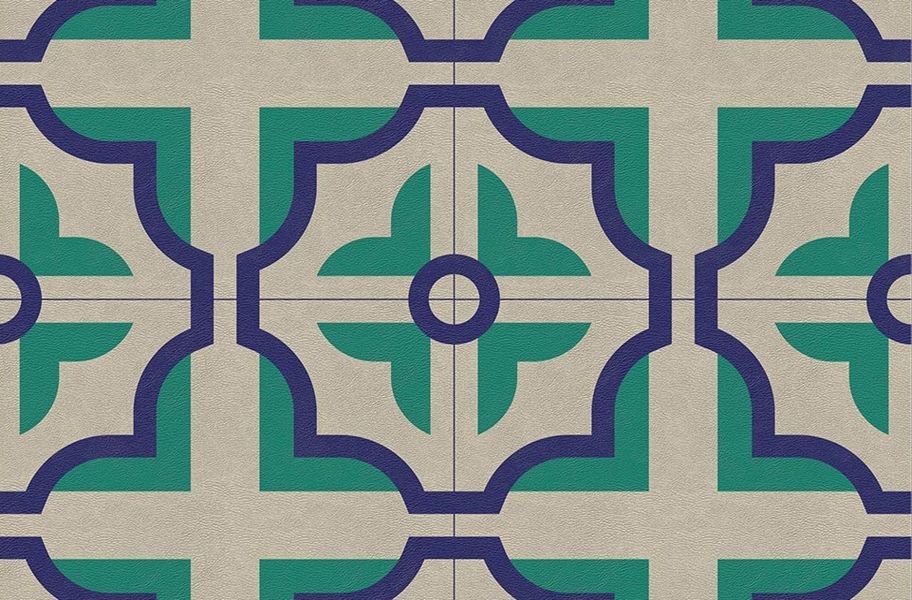
To add a vintage feel to your space, decorative, stone- and wood-look vinyl tiles and planks create a neutral backdrop for retro decor and furniture. Commonly, you’ll see medium-toned wood-look vinyl planks, and darker stone-look tiles to add to the vintage style ambiance.
Related Content > Vinyl Flooring Trends: 20+ Hot Vinyl Flooring Ideas
Vintage Style Wood Flooring
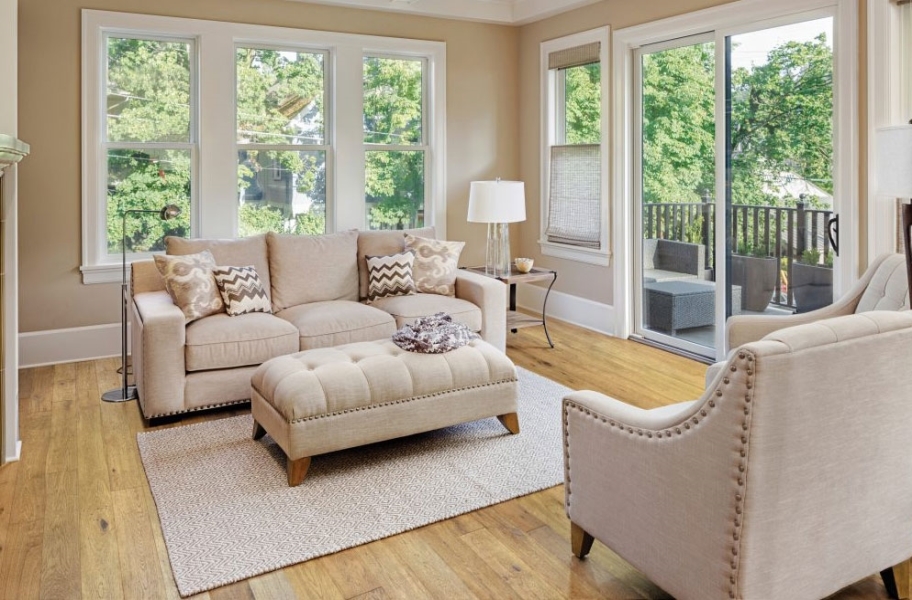
While it’s hard to find an authentic vintage floor, it’s easy to find vintage-inspired wood flooring. With different shades, textures, and wood species, you can find the perfect wood flooring to complete your vintage style space.
ntique Light-Tone Wood Flooring
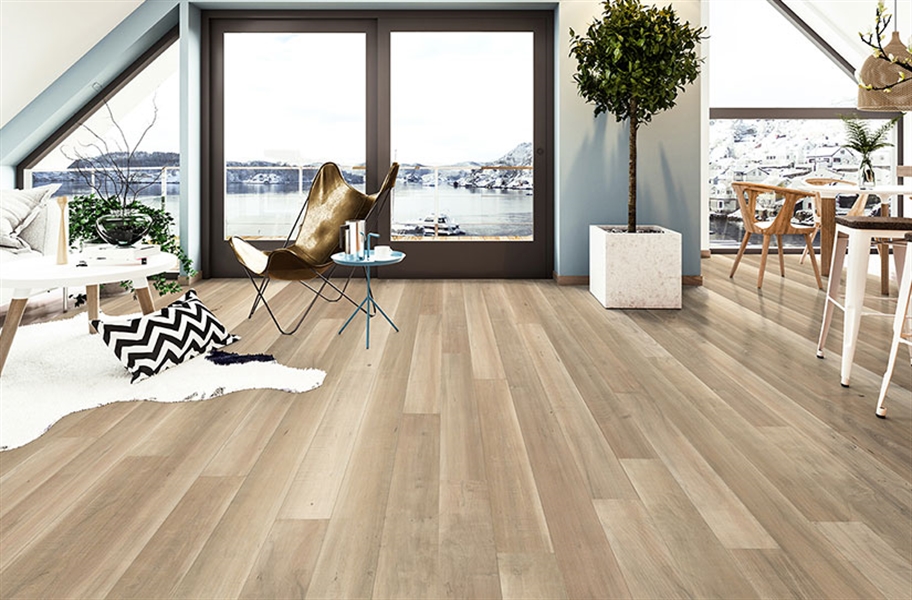
For a more classic starting point to your vintage retro room, light-toned wood flooring provides the vintage element you need. This look helps the space feel open, so you can jazz it up with amazing art and velvet furniture.
Warm Honey-Tone Wood Flooring
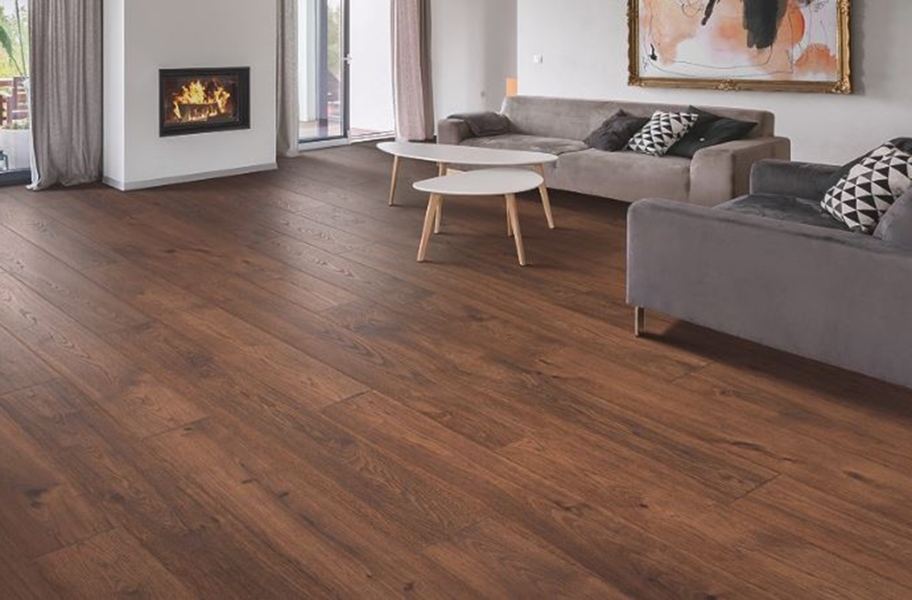
Applying honey-toned wood flooring is the best way to get a classic vintage style floor in your home. Short planks with high variation create a nostalgic feel to perfectly encompass your vintage-inspired home.
Related Content > Wood Flooring Trends: 21 Trendy Flooring Ideas
Conclusion
It’s easy to style your home with retro or vintage style flooring once you know the general direction of your decor. Remember, retro style is classic, bold, and fun.
